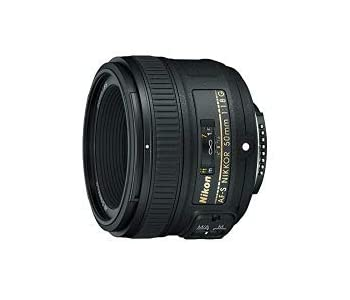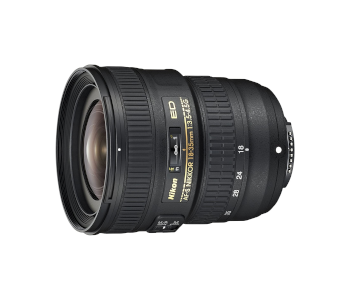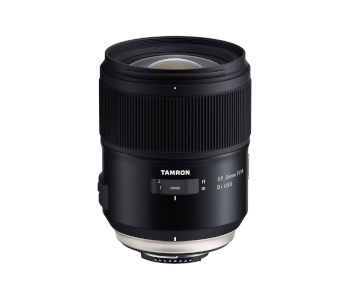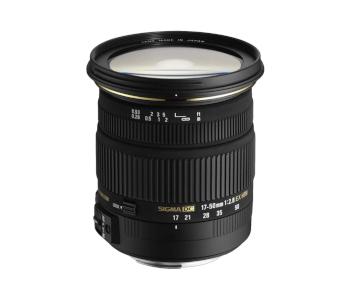6 Best Nikon Travel Lens Picks for 2020
Travel broadens the mind and helps us discover more about ourselves and the world we’re a part of. How do most people choose where to travel? By pouring over pictures of sand-swept beaches or bustling urban centers, of course, and that’s why travel photography is indispensable. Nikon fans have many lenses to choose from, but few make the cut for true globetrotters.
A lens needs to jump through a lot of hoops to be considered travel-ready. It needs to capture diverse subjects ranging in size and complexity from smiling tourists to sprawling landscapes. The outdoors can be unforgiving, so weather sealing is highly desirable. You’ll have neither the time nor the inclination to set up shots on a tripod and need lenses with image stabilization that ensure every shot is a winner.
You’re sure to find the best travel lens Nikon cameras will benefit from among our exclusive picks. We’ve thoroughly reviewed lenses of varying focal length and aperture ranges for Nikon’s DSLR and mirrorless camera systems. You’ll find dependable originals along with top-quality third-party solutions and can get a proven recommendation from this article regardless of your budget. Pick your favorite and start wowing all of us with award-winning images from across the globe.
| Budget |
|---|
 |
| Nikon AF-S Nikkor 50mm f/1.8G |
| 4.1/5.0 |
| Type: Standard prime |
| Mount: Nikon F |
| Color fringing and distortion are handled well. |
| Check Amazon |
| Best Value |
|---|
 |
| Nikon AF-S NIKKOR 18-35mm f/3.5-4.5G ED |
| 4.5/5.0 |
| Type: Wide-angle zoom |
| Mount: Nikon F |
| Responsive autofocus in good light. |
| Check Amazon |
| Top Pick |
|---|
 |
| Nikon AF-S NIKKOR 24-70mm f/2.8E ED VR |
| 4.7/5.0 |
| Type: Standard zoom |
| Mount: Nikon F |
| Exceptional versatility and image quality. |
| Check Amazon |
Nikon Travel Lenses Comparison Table
| Image | Product | Overall Rating | Image quality | Build quality | Versatility | Price |
|---|---|---|---|---|---|---|
 | Nikon AF-S NIKKOR 24-70mm f/2.8E ED VR | 4.7 | 4.6 | 4.7 | 4.7 | Check Price |
 | Nikon AF-S NIKKOR 18-35mm f/3.5-4.5G ED | 4.5 | 4.5 | 4.4 | 4.6 | Check Price |
 | Tamron SP 35mm f1.4 Di USD | 4.5 | 4.6 | 4.6 | 4.2 | Check Price |
 | Nikon NIKKOR Z 24-70mm f/4 S | 4.4 | 4.3 | 4.3 | 4.6 | Check Price |
 | Sigma 17-50mm f/2.8 EX DC OS HSM | 4.3 | 4.3 | 4.2 | 4.4 | Check Price |
 | Nikon AF-S Nikkor 50mm f/1.8G | 4.1 | 4.2 | 4.0 | 4.0 | Check Price |
1. Best Overall – Nikon AF-S NIKKOR 24-70mm f/2.8E ED VR
Editor’s Rating: 4.7/5
A focal length between 24 and 70mm is ideal for travel photography. It’s wide enough for stunning landscape photos on one end while also letting you shoot pictures of food, architecture, or portraits the closer you are to 70mm. Nikon’s AF-S NIKKOR 24-70mm f/2.8E ED VR is the company’s premium standard zoom lens and the only one you need no matter where travels may take you.
Overview of Features
The AF-S NIKKOR 24-70mm f/2.8E ED VR is an improvement upon Nikon’s earlier flagship zoom lens from 2007. The new lens is longer and heavier since there are now 20 elements in 16 groups, including one that disperses light and minimizes chromatic aberration. Everything from the magnesium body through the secure glass to nicely-damped zoom & focus rings is built to the highest standard. You’ll love this lens if you’re an intrepid explorer since complete weather sealing lets it withstand extreme conditions.
Nikon’s current-gen lenses use Silent Wave motors for quick focus acquisition, and the AF-S NIKKOR 24-70mm f/2.8E ED VR performs exceptionally well here. Feel free to shoot during golden hour or even after sunset since it takes no time to focus and doesn’t hunt in unfavorable light. Vibration Reduction is another new feature that increases the lens’s versatility. It compensates for four shutter speed stops and allows you to shoot with confidence when holding your Nikon camera.
The AF-S NIKKOR 24-70mm f/2.8E ED VR’s sharpness is controversial, at least until you understand the rationale behind Nikon’s engineering decisions. The lens isn’t soft at f/2.8 by any means, but that’s the aperture at which it performs the worst regardless of focal length. However, things take a drastic turn for the better when you step down to f/4 and remain excellent until diffraction starts cutting into image quality at f/16.
Other optical properties are solid. We particularly like the AF-S NIKKOR 24-70mm f/2.8E ED VR’s bokeh when wide open. There’s some chromatic aberration that goes away at f/4 and below. You’ll see some barrel distortion at 24mm that’s replaced by the pincushion variety once you’re past 50mm, both of which you can correct for in-camera. The lens doesn’t have high magnification, but it can focus at 1.3 feet to deliver appetizing pics of dishes in restaurants or produce on display at local markets.
What We Didn’t Like
The AF-S NIKKOR 24-70mm f/2.8E ED VR is the most expensive lens on review. On the other hand, it will last you a lifetime and pulls its weight for all but sports & wildlife shooting, so you can use it even when not on the road. There’s noticeable vignetting at f/2.8 since the corners are 2.5 stops darker than the center. You can correct this by decreasing the aperture or using photo editing software.
| Tech Specs |
|---|
| Dimensions: 3.5 x 3.5 x 6.1 in. |
| Weight: 2.3 lbs. |
| Type: Standard zoom |
| Mount: Nikon F |
| Minimum focal length: 24mm |
| Maximum focal length: 70mm |
| Maximum aperture: f/2.8 |
| Minimum aperture: f/22 |
| Minimum focus distance: 1.3 ft. |
| Angle of view: 84° to 34° 20′ |
| Image stabilization: Yes |
| The Pros |
|---|
| Exceptional versatility and image quality |
| Premium build quality makes it suitable for any environment |
| Fast and accurate autofocus |
| Effective image stabilization |
| The Cons |
|---|
| Expensive |
| Strong vignetting at max aperture |
2. Best Value – Nikon AF-S NIKKOR 18-35mm f/3.5-4.5G ED
Editor’s Rating: 4.5/5
Do you need a lens that excels at shooting breathtaking landscapes while being light on your wallet and back? In that case, the AF-S NIKKOR 18-35mm f/3.5-4.5G ED is all you need. This mid-range lens balances superbly on all Nikon full-frame cameras and has remarkable central sharpness. Its flare resistance is great as well, so get ready to shoot against the sun and dazzle your audience with romantic sunsets.
Overview of Features
The first thing you’ll notice about the AF-S NIKKOR 18-35mm f/3.5-4.5G ED is its weight or rather a lack of it. The lens weighs less than 14 ounces and is 3.7 inches long, meaning you’ll easily be able to find a place for it in your travel gear bag even if you pack lightly. Lack of weather sealing and a plastic body are the sacrifices you have to make, but the bayonet mount is metal, and the rings are coated in rubber for more responsive handling.
A lower maximum aperture has the most impact on the AF-S NIKKOR 18-35mm f/3.5-4.5G ED’s autofocus capabilities. It goes toe to toe with more expensive lenses but is slightly slower to acquire focus in low light since it can’t gather enough of it quickly. That’s not a concern for landscape photography, though, and neither is a lack of image stabilization.
The AF-S NIKKOR 18-35mm f/3.5-4.5G ED exhibits strong central sharpness across its focal length and aperture range. Coupled with vivid colors, this lets you make detailed crops from the center of the frame and take advantage of high-end full-frame pixel counts. The lens isn’t bright enough for appealing bokeh, but you can create smooth backgrounds that make subjects stand out.
We love the AF-S NIKKOR 18-35mm f/3.5-4.5G ED’s flare resistance. Including the sun in your shots isn’t a problem since it doesn’t lead to a loss of contrast, and ghosting is negligible. CA control is another admirable feature as you’ll have to look close to find any color fringing. Vignetting is low for a wide-angle lens, reaching peak levels at f/3.5 18mm but never exceeding 1.5 stops.
What’s Bad About It?
The AF-S NIKKOR 18-35mm f/3.5-4.5G ED suffers from pronounced barrel distortion, a common occurrence even for much more expensive wide-angle zoom lenses. Its corners are soft and don’t manage to close the gap with the center even though the difference becomes noticeably smaller at narrower apertures.
| Tech Specs |
|---|
| Dimensions: 3.3 x 3.3 x 3.7 in. |
| Weight: 13.6 oz. |
| Type: Wide-angle zoom |
| Mount: Nikon F |
| Minimum focal length: 18mm |
| Maximum focal length: 35mm |
| Maximum aperture: f/3.5 to 4.5 |
| Minimum aperture: f/22 to 29 |
| Minimum focus distance: 11 in. |
| Angle of view: 100° to 63° |
| Image stabilization: No |
| The Pros |
|---|
| Excellent value for the money |
| Great central sharpness |
| Responsive autofocus in good light |
| Strong flare resistance and minimal vignetting for this lens type |
| The Cons |
|---|
| Pronounced barrel distortion at f/3.5 18mm |
| Soft corners |
3. Tamron SP 35mm f1.4 Di USD
Editor’s Rating: 4.5/5
Tamron has a track record of producing third-party lenses that rival much more expensive originals, and the SP 35mm f1.4 Di USD is one of the latest feathers in its cap. A fixed focal length of 35mm lets you take pictures of scenery, architecture, or food, while group portraits turn out great as well, The lens features excellent build quality, is wickedly sharp, and produces beautiful bokeh you wouldn’t expect from wide-angle glass.
Overview of Features
The SP 35mm f1.4 Di USD is meticulously engineered to handle weather extremes yet remain responsive. Its deep black body is metal, broken up only by the broad rubberized focus ring. Most glass elements have received the royal coating treatment, while the front one also has a fluorine layer. This makes the lens highly resistant to smudges and water droplets.
We were impressed with the SP 35mm f1.4 Di USD’s autofocusing capabilities. Its ultrasonic ring-type motor is a traditional design compared to Nikon originals, but it’s among the quietest we’ve tested with speed and accuracy to match. This is Tamron’s first lens to feature a Dynamic Rolling-cam mechanism that speeds up internal element movement and allows for split-second focus acquisition despite the lens’s weight. You can also override the autofocus at any time.
The SP 35mm f1.4 Di USD is among the sharpest lenses we’ve tested. Both central and corner sharpness rise steadily as you step the aperture down, peaking at f/4. However, sharpness is excellent from comer to corner, even at f/1.4! Your creativity and the nature of a particular shot become the only limiting factor with optics like these.
The SP 35mm f1.4 Di USD continues to impress with its other properties. There’s one percent of barrel distortion, which shouldn’t be an issue even if you’re taking pictures of cathedrals and other architectural marvels. Chromatic aberration hovers around one percent regardless of aperture, while setting a shot up to include the sun won’t impact the lens’s contrast and accurate color rendition.
A minimum focusing distance of less than an inch offers 1:5x magnification. Couple that with the razor-thin depth of field this lens can produce, and you’ve got everything you need for stunning close-up shots
Are There Drawbacks?
We’ve been singing the SP 35mm f1.4 Di USD’s praises for the entire review, so why isn’t it on top? Its fixed focal length makes the lens less versatile than our overall winner. More importantly, the SP 35mm f1.4 Di USD lacks image stabilization and has to be supported to be used to its full potential. Additionally, vignetting is evident at f/1.4 and takes several stops to disappear.
| Tech Specs |
|---|
| Dimensions: 3.2 x 3.2 x 4 in. |
| Weight: 1.8 lbs. |
| Type: Wide-angle prime |
| Mount: Nikon F |
| Focal length: 35mm |
| Maximum aperture: f/1.4 |
| Minimum aperture: f/16 |
| Minimum focus distance: 11.8 in. |
| Angle of view: 63° |
| Image stabilization: No |
| The Pros |
|---|
| Exceptional all-around sharpness |
| Excellent build quality and weather sealing |
| Renders beautifully blurred backgrounds and bokeh |
| Excellent autofocus speed and accuracy |
| The Cons |
|---|
| Lacks image stabilization |
| Very strong vignetting at f/1.4 |
4. Nikon NIKKOR Z 24-70mm f/4 S
Editor’s Rating: 4.4/5
Nikon’s fledgling Z mount mirrorless system had few viable travel lenses at launch, so early adopters had to make do with converters. Things have changed now that the NIKKOR Z 24-70mm f/4 S. It’s every bit as versatile as its F mount counterparts. The lens is also exceptionally resistant to flare, has one of the best autofocus systems out there, and deftly creates creamy bokeh despite its relatively low max aperture.
Overview of Features
The NIKKOR Z 24-70mm f/4 S is a study in minimalism and a compact model that balances perfectly on your Z6 or Z7. It’s metal and black except for focal length marks and a silver decorative strip in front of the single A/M switch. Its front element has a layer of fluorine and won’t get dirty quickly. There’s also Nano Crystal coating along with ARNEO, a new type of coat for Z mount lenses that reduces flares made by light shining on the lens vertically.
An AF-P motor is responsible for the NIKKOR Z 24-70mm f/4 S’s exceptional autofocus accuracy. Expect it to match manual results almost all the time, swiftly & silently to boot. The focus ring’s shape and use attest to Nikon’s confidence in the lens’s autofocus. The ring is thin and can be used as a control ring in AF mode to set parameters like EV compensation and ISO more intuitively. Introducing more stabilization on top of Z cameras’ excellent five-axis IBIS would be overkill, so it’s understandable why the NIKKOR Z 24-70mm f/4 S doesn’t have any.
Sharpness on the NIKKOR Z 24-70mm f/4 S follows a pattern that stays true regardless of focal length. Central sharpness starts good at f/4 and improves at f/5.6. There’s a disparity between the middle and corners at f/4 that reaches minimal levels at f/8 since the corners steadily gain sharpness while central clarity starts to decline at that f-stop.
You’ll love the NIKKOR Z 24-70mm f/4 S for any kind of external shoots since it handles excess light well. There are no artifacts, and veiling flare doesn’t diminish the lens’s excellent contrast. The sunstars the lens creates at low apertures is of particular note since its seven diaphragm blades are configured in a way that produces unusually thick yet pleasing beams of light,
At its worst, the NIKKOR Z 24-70mm f/4 S exhibits tolerable vignetting that depends on focusing distance as well as aperture. You’ll need to examine images at 100% to detect chromatic aberration and can marvel at even highlights or dreamy background blur when shooting at f/4.
What’s Bad About It?
The NIKKOR Z 24-70mm f/4 S is an expensive lens considering its low max aperture. It also suffers from considerable distortion at both ends of its focal range. You’ll need to compensate for this either in your camera or through Lightroom since warping of straight lines is easy to spot otherwise.
| Tech Specs |
|---|
| Dimensions: 3.1 x 3.1 x 3.5 in. |
| Weight: 1.1 lbs. |
| Type: Standard zoom |
| Mount: Nikon Z |
| Minimum focal length: 24mm |
| Maximum focal length: 70mm |
| Maximum aperture: f/4 |
| Minimum aperture: f/22 |
| Minimum focus distance: 11.8 in. |
| Angle of view: 84° to 34° 20′ |
| Image stabilization: No |
| The Pros |
|---|
| Exemplary flare and artifact resistance |
| Silent and accurate autofocus |
| Useful control ring |
| Consistently sharp |
| The Cons |
|---|
| Expensive considering its specs |
| Barrel and pincushion distortion at focal length extremes |
5. Sigma 17-50mm f/2.8 EX DC OS HSM
Editor’s Rating: 4.3/5
Owners of APS-C Nikon cameras can invest in cheaper lenses and still get jaw-dropping travel photos with little effort. Sigma’s 17-50mm f/2.8 EX DC OS HSM is the go-to 3rd-party lens for the task, and with good reason. Its standard focal length accommodates the vast majority of travel themes, its optics are sound, and you even get competent image stabilization.
Overview of Features
The 17-50mm f/2.8 EX DC OS HSM is reasonably light and balances well on smaller APS-C bodies. It extends when zoomed in but doesn’t suffer from zoom creep. You can toggle a switch when it’s at 17mm to keep it from moving if you aren’t convinced. The lens is made from plastic and has a pleasing black finish that isn’t susceptible to fingerprints and other stains. The zoom & focus rings are rubberized and have enough play for smooth and accurate rotation.
Sigma uses High-Speed Motor technology for autofocus operation. The 17-50mm f/2.8 EX DC OS HSM doesn’t have full-time manual focus, so you’ll have to toggle its A/M switch to manual if you want to make corrections. The autofocus is accurate but slower than on original Nikon lenses. There’s also optical image stabilization, which compensates for three shutter speed stops and makes low-light or action shooting easier.
The lens is a distinguished performer when it comes to central sharpness, which remains excellent throughout its aperture and focal range. The corners at f/2.8 are soft and improve gradually, reaching their peak at f/5.6 but never closing the gap with the center. Diffraction becomes an issue at f/16, so we wouldn’t recommend using it or f/22 unless you’re after pics featuring sunstars.
Flare resistance and contrast depend on the current focal length, but the 17-50mm f/2.8 EX DC OS HSM has no issues you couldn’t fix by repositioning. There’s some chromatic aberration at 17mm f/2.8 that disappears when you change either parameter. The bokeh could be smoother, but it’s far from irritating.
What We Didn’t Like
The 17-50mm f/2.8 EX DC OS HSM exhibits pronounced barrel distortion at one extreme of its zoom range and medium pincushion distortion at the other. Let your camera correct for this or keep the lens at 25mm for the best results. The autofocus is reasonably quiet but not silent since you can hear whirring and ticking as it adjusts. This makes the lens a poor choice for filmmakers.
| Tech Specs |
|---|
| Dimensions: 3.3 x 3.3 x 3.6 in. |
| Weight: 1.2 lbs. |
| Type: Standard zoom |
| Mount: Nikon F |
| Minimum focal length: 17mm |
| Maximum focal length: 50mm |
| Maximum aperture: f/2.8 |
| Minimum aperture: f/22 |
| Minimum focus distance: 11 in. |
| Angle of view: 79.7° to 31.7° |
| Image stabilization: Yes |
| The Pros |
|---|
| Effective image stabilization |
| Excellent central sharpness |
| Robust build |
| Few CA and ghosting issues |
| The Cons |
|---|
| Some barrel and pincushion distortion |
| Not quiet enough for use as a film lens |
6. Best Budget Option – Nikon AF-S Nikkor 50mm f/1.8G
Editor’s Rating: 4.1/5
Are you an amateur photographer looking to step up from your camera’s kit lens for your upcoming vacation? The AF-S Nikkor 50mm f/1.8G has your name on it if you want excellent image clarity at a low price. It’s optically on par with more expensive rivals, effortless to use, and tackles chromatic aberration better than any other lens we’ve seen without ED elements.
Overview of Features
The AF-S Nikkor 50mm f/1.8G is a traveler’s dream. It weighs less than seven ounces and is by far the most compact lens on review. It balances well even if you have a small APS-C camera like the D5600. Price definitely isn’t an indicator of quality in this case since the lens is made from sturdy polycarbonate and has a metal mount secured with a rubber gasket. It isn’t weatherproof, but the gasket ensures moisture and dust won’t gunk up your camera’s internals.
A Silent Wave Motor is responsible for the AF-S Nikkor 50mm f/1.8G’s agile autofocus. It’s not the fastest performer on review, but it does resolve sharp-looking subjects in adequate time. The lens is whisper-quiet, so you can use it for video. It won’t extend while zooming and focusing doesn’t rotate the filter thread. Attaching polarizers and the deep spherical hood will increase the lens’s already solid handling of excess light.
The AF-S Nikkor 50mm f/1.8G’s overall sharpness follows a steep curve with a flat top. Central sharpness is adequate at f/1.8, while edges are softer than we’d like. Both climb steadily, reaching excellent territory at f/4 and staying there until diffraction starts being an issue at f/11. Stepping down to as little as f/2.8 is enough to yield images of excellent quality.
The foreground and background blur this lens produces are smooth. Bokeh is even and doesn’t have sharp rims but may be too oblong for nitpickers. There’s nothing to nitpick over when it comes to chromatic aberration and distortion since both are present yet pose little threat to image quality in the field.
Are There Drawbacks?
The AF-S Nikkor 50mm f/1.8G has an f-stop slider, but its usefulness is questionable since only f/16 is shown. Light falloff in the corners is evident at f/1.8 and doesn’t disappear until you set the aperture to f/4 or use Lightroom when processing photos.
| Tech Specs |
|---|
| Dimensions: 2.8 x 2.8 x 2.1 in. |
| Weight: 6.5 oz. |
| Type: Standard prime |
| Mount: Nikon F |
| Focal length: 35mm |
| Maximum aperture: f/1.8 |
| Minimum aperture: f/16 |
| Minimum focus distance: 1.3 ft. |
| Angle of view: 47° |
| Image stabilization: No |
| The Pros |
|---|
| Travel-friendly prime at a bargain price |
| Good sharpness that improves steadily as you step down |
| Silent autofocus |
| Color fringing and distortion are handled well |
| The Cons |
|---|
| Useless f-stop slider |
| Pronounced light falloff at f/1.8 |
Contents
- Nikon Travel Lenses Comparison Table
- 1. Best Overall – Nikon AF-S NIKKOR 24-70mm f/2.8E ED VR
- Overview of Features
- What We Didn’t Like
- 2. Best Value – Nikon AF-S NIKKOR 18-35mm f/3.5-4.5G ED
- Overview of Features
- What’s Bad About It?
- 3. Tamron SP 35mm f1.4 Di USD
- Overview of Features
- Are There Drawbacks?
- 4. Nikon NIKKOR Z 24-70mm f/4 S
- Overview of Features
- What’s Bad About It?
- 5. Sigma 17-50mm f/2.8 EX DC OS HSM
- Overview of Features
- What We Didn’t Like
- 6. Best Budget Option – Nikon AF-S Nikkor 50mm f/1.8G
- Overview of Features
- Are There Drawbacks?

